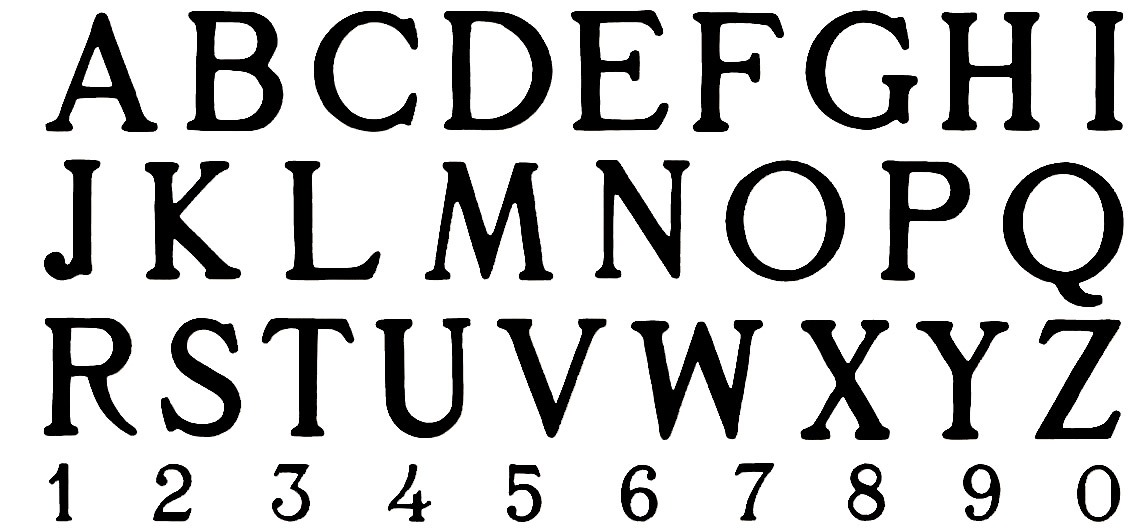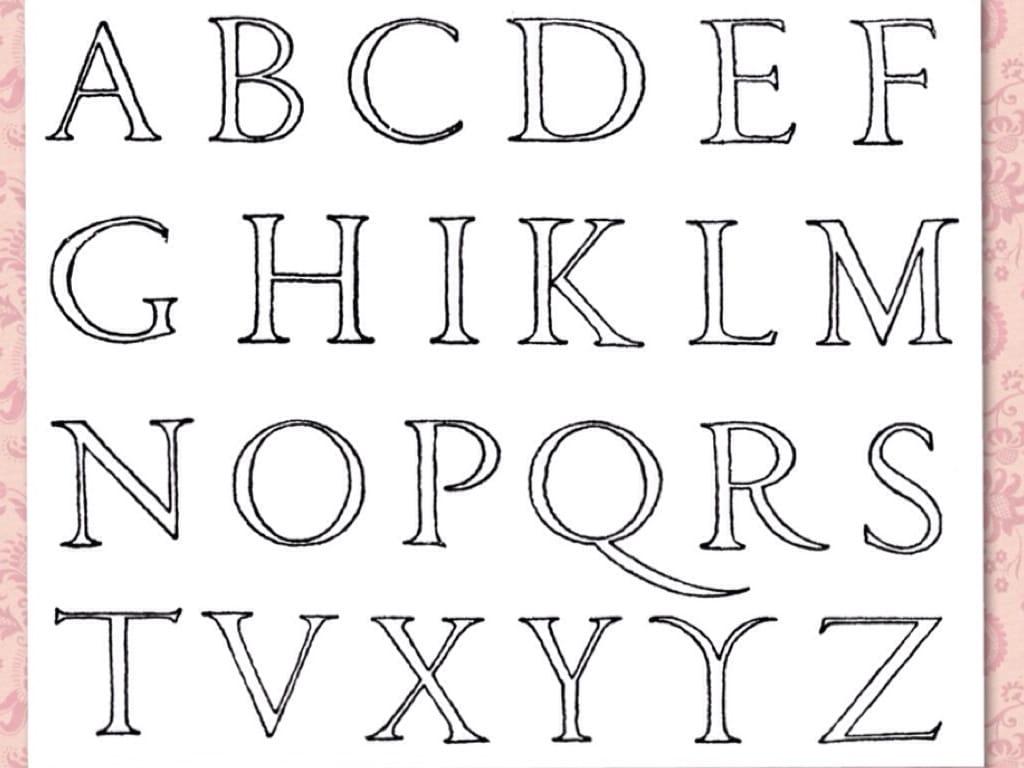Old Roman Letters
Old Roman Letters - The classical roman alphabet contained only 23 letters (no j, u or w.) in the beginning, all these letters were capitals (majuscules). The languages that use the latin alphabet generally use capital letters to begin paragraphs and sentences and for proper nouns. Old roman cursive, also called majuscule cursive and capitalis cursive, was the everyday form of handwriting used for writing letters, by merchants writing business accounts, by schoolchildren learning the latin alphabet, and even by. The old roman letters were retained for formal inscriptions and for emphasis in written documents. The classical latin alphabet consisted of 23 letters, 21 of which were derived from the etruscan alphabet. In medieval times the letter i was differentiated into i and j and v into u, v, and w, producing an alphabet equivalent to. The latin alphabet, also known as the roman alphabet, is the collection of letters originally used by the ancient romans to write the latin language.
The classical latin alphabet consisted of 23 letters, 21 of which were derived from the etruscan alphabet. The latin alphabet, also known as the roman alphabet, is the collection of letters originally used by the ancient romans to write the latin language. The classical roman alphabet contained only 23 letters (no j, u or w.) in the beginning, all these letters were capitals (majuscules). The languages that use the latin alphabet generally use capital letters to begin paragraphs and sentences and for proper nouns. Old roman cursive, also called majuscule cursive and capitalis cursive, was the everyday form of handwriting used for writing letters, by merchants writing business accounts, by schoolchildren learning the latin alphabet, and even by. In medieval times the letter i was differentiated into i and j and v into u, v, and w, producing an alphabet equivalent to. The old roman letters were retained for formal inscriptions and for emphasis in written documents.
The classical latin alphabet consisted of 23 letters, 21 of which were derived from the etruscan alphabet. The old roman letters were retained for formal inscriptions and for emphasis in written documents. In medieval times the letter i was differentiated into i and j and v into u, v, and w, producing an alphabet equivalent to. The classical roman alphabet contained only 23 letters (no j, u or w.) in the beginning, all these letters were capitals (majuscules). The latin alphabet, also known as the roman alphabet, is the collection of letters originally used by the ancient romans to write the latin language. Old roman cursive, also called majuscule cursive and capitalis cursive, was the everyday form of handwriting used for writing letters, by merchants writing business accounts, by schoolchildren learning the latin alphabet, and even by. The languages that use the latin alphabet generally use capital letters to begin paragraphs and sentences and for proper nouns.
Latin modern roman font word too wide hallpassl
Old roman cursive, also called majuscule cursive and capitalis cursive, was the everyday form of handwriting used for writing letters, by merchants writing business accounts, by schoolchildren learning the latin alphabet, and even by. The classical latin alphabet consisted of 23 letters, 21 of which were derived from the etruscan alphabet. The classical roman alphabet contained only 23 letters (no.
A Constructed Roman Alphabet
The classical latin alphabet consisted of 23 letters, 21 of which were derived from the etruscan alphabet. The languages that use the latin alphabet generally use capital letters to begin paragraphs and sentences and for proper nouns. The old roman letters were retained for formal inscriptions and for emphasis in written documents. In medieval times the letter i was differentiated.
Roman Alphabet Chart Collection Oppidan Library
In medieval times the letter i was differentiated into i and j and v into u, v, and w, producing an alphabet equivalent to. The latin alphabet, also known as the roman alphabet, is the collection of letters originally used by the ancient romans to write the latin language. The old roman letters were retained for formal inscriptions and for.
Ancient Roman Alphabet A Z
The old roman letters were retained for formal inscriptions and for emphasis in written documents. The classical roman alphabet contained only 23 letters (no j, u or w.) in the beginning, all these letters were capitals (majuscules). Old roman cursive, also called majuscule cursive and capitalis cursive, was the everyday form of handwriting used for writing letters, by merchants writing.
Printable Old English Latin Alphabet Tattoo Lettering Fonts, Lettering
The old roman letters were retained for formal inscriptions and for emphasis in written documents. The classical latin alphabet consisted of 23 letters, 21 of which were derived from the etruscan alphabet. Old roman cursive, also called majuscule cursive and capitalis cursive, was the everyday form of handwriting used for writing letters, by merchants writing business accounts, by schoolchildren learning.
9 Roman Lettering Styles Fonts Images Roman Style Letters, Ancient
The old roman letters were retained for formal inscriptions and for emphasis in written documents. In medieval times the letter i was differentiated into i and j and v into u, v, and w, producing an alphabet equivalent to. The latin alphabet, also known as the roman alphabet, is the collection of letters originally used by the ancient romans to.
Online Roman Alphabet Oppidan Library
The latin alphabet, also known as the roman alphabet, is the collection of letters originally used by the ancient romans to write the latin language. The languages that use the latin alphabet generally use capital letters to begin paragraphs and sentences and for proper nouns. The old roman letters were retained for formal inscriptions and for emphasis in written documents..
A Constructed Roman Alphabet Numbers Font, Alphabet And Numbers
The classical roman alphabet contained only 23 letters (no j, u or w.) in the beginning, all these letters were capitals (majuscules). The classical latin alphabet consisted of 23 letters, 21 of which were derived from the etruscan alphabet. The latin alphabet, also known as the roman alphabet, is the collection of letters originally used by the ancient romans to.
Roman Britain The Shooting Star
The old roman letters were retained for formal inscriptions and for emphasis in written documents. The languages that use the latin alphabet generally use capital letters to begin paragraphs and sentences and for proper nouns. Old roman cursive, also called majuscule cursive and capitalis cursive, was the everyday form of handwriting used for writing letters, by merchants writing business accounts,.
the upper and lower letters of an english alphabet
Old roman cursive, also called majuscule cursive and capitalis cursive, was the everyday form of handwriting used for writing letters, by merchants writing business accounts, by schoolchildren learning the latin alphabet, and even by. The classical latin alphabet consisted of 23 letters, 21 of which were derived from the etruscan alphabet. The languages that use the latin alphabet generally use.
The Classical Roman Alphabet Contained Only 23 Letters (No J, U Or W.) In The Beginning, All These Letters Were Capitals (Majuscules).
The old roman letters were retained for formal inscriptions and for emphasis in written documents. Old roman cursive, also called majuscule cursive and capitalis cursive, was the everyday form of handwriting used for writing letters, by merchants writing business accounts, by schoolchildren learning the latin alphabet, and even by. The latin alphabet, also known as the roman alphabet, is the collection of letters originally used by the ancient romans to write the latin language. The languages that use the latin alphabet generally use capital letters to begin paragraphs and sentences and for proper nouns.
The Classical Latin Alphabet Consisted Of 23 Letters, 21 Of Which Were Derived From The Etruscan Alphabet.
In medieval times the letter i was differentiated into i and j and v into u, v, and w, producing an alphabet equivalent to.



:max_bytes(150000):strip_icc()/GettyImages-852354592-5c71dc9846e0fb0001f87ce0.jpg)





